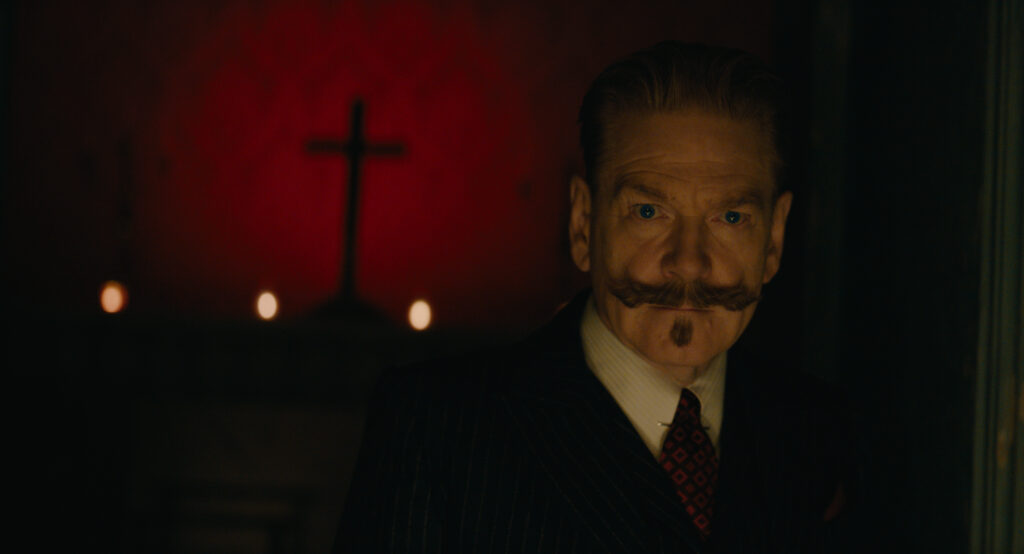
Coming in third, behind only Shakespeare and the Bible, Agatha Christie is one of the world’s bestselling authors. It stands to reason then that adaptations of her work have become ubiquitous – almost a film genre in itself. The latest Christie to grace cinemas is the third instalment of Kenneth Branaugh’s Poirot series, A Haunting in Venice, based on one of Christie’s later novels Hallowe’en Party.
It’s an interesting choice – one that marks a departure from Branaugh’s prior remakes of Christie’s most famous works: Murder on the Orient Express and Death on the Nile. Both received severe criticism; whilst Branaugh’s flashy and star-studded adaptations were designed to bring Christie up to date for a modern audience, the choice to focus on aesthetics ended up sucking the life out of Christie’s works.
Adapting Christie’s most popular works was always going to be risky, not least because earlier films proved so difficult to measure up to – Branaugh’s Poirot had big, David Suchet shaped boots to fill. Hallowe’en Party then, as one of Christie’s lesser known works, theoretically allowed for more creative freedom – something Branaugh capitalised on with the shift of the setting to Venice and change to several important plot points. Despite this potential, Branaugh once again falls short of the mark.
Branaugh’s Poirot had big, David Suchet shaped boots to fill
A Haunting in Venice is not a bad film; it’s enjoyable, well-acted, and full of entertaining twists. It is, however, a bad Agatha Christie film. In his attempt to make himself the star, Branaugh ignores that Poirot is not the hero. Christie’s novels aren’t intended to celebrate or idolise the detective – Christie herself reportedly hated Poirot. The star is the murder mystery itself and the audiences’ race against time to piece it together before Poirot can. In Branaugh’s interpretations, the suspects, clues, victims, and even the murderer themselves are secondary to Poirot; the films are no longer about the puzzle, they’re about the detective.
With the added Poirot lore – including a strange moustache origin story in Death on the Nile – flashy action scenes, and rehashing of Christie’s plots, there is an overall sense that Branaugh is slightly bored by Christie. Poirot is turned into something he never was, and so loses much of his charm and appeal; it seems Branaugh couldn’t resist the temptation to add more ‘excitement’ to the stories, instead of letting the thrill of a classic whodunnit stand on its own.


